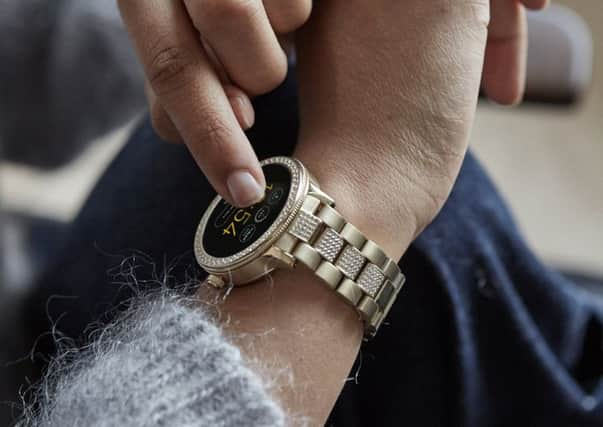Has the smartwatch's time finally arrived?


So when fashion and technology collide, there ought to be a conveyor belt of new products arriving on the shelves with each change of season.
The end-of-range sales that go on around this time of year in the smartwatch sector is a first indication of this cycle. The owners of such trinkets, it is reasoned, will have two reasons to update last year’s purchase, since both the insides and outsides will have passed their sell-by dates.
Advertisement
Hide AdAdvertisement
Hide AdBased on technology alone, smartwatches have never really gained the traction that was anticipated when Apple unleashed the first ones. That’s because, since they mostly replicate the functions of mobile phones, no-one has ever really found a compelling use for them. You need a phone paired to your smartwatch before you can fully use it, and for many functions, the watch is little more than a remote control for the handset.
But watches are nothing if not fashion accessories, even for men, and it is the fashion industry that has come to their rescue.
The Fossil Group, which makes jewellery, handbags and the like for such brand names as Armani, Michael Kors and Diesel, is now also one of the world’s principal purveyors of watches built around Google’s “Wear” operating system, a rival to Apple’s WatchOS. Its models are different on the outside but identical inside.
The fourth generation of these watches is making its way into the shops now, with upgraded technical specifications and styling quirks, while at the same time, the 2017 range is being offered at nearly £100 less than the original price.
Advertisement
Hide AdAdvertisement
Hide AdThe new models are distinguishable by being swim-proof and by the inclusion of a GPS receiver, heart rate monitor and a chip that lets you use them at shop tills instead of a contactless card. But the processor is the same as last year’s, so it remains to be seen whether the new functionality slows things down.
Unless you’re desperate to monitor your heart rate and frightened of being seen on Carnaby Street with last year’s accessory, the previous range is a much better buy. Around £180 at sale prices gets you a third-generation model in a range of sizes and styles, with a steel strap thrown in. Upon their release at this time last year, these were a considerable step up from what had gone before, not least with displays that filled the whole of the watch face.
There are limitations, though. The display can be hard to see in bright sunlight, and they need to be charged all night, every night, otherwise they’re useless the next day. But they do have the advantage of infinitely customisable screens that can change from analogue to digital according to your whim. They can also display calendar events, emails and other messages. And, of course, they tell the time with split-second accuracy.
If you’ve been considering one, and if you have an Android phone with which to pair it, a third-generation Fossil or one of its sister brands is a compelling proposition right now. At a little over half the cost of the cheapest current Apple watch, their time could finally have arrived, even if they do have last year’s date.